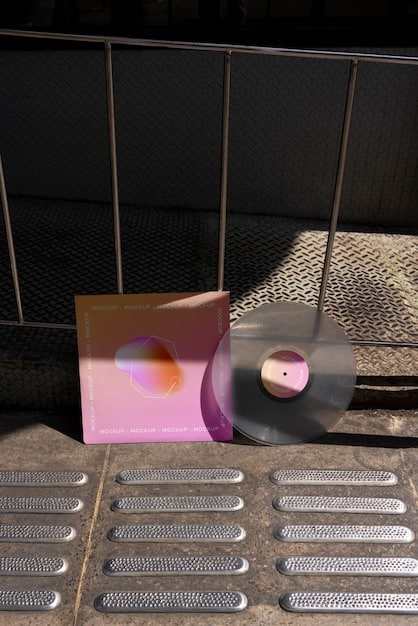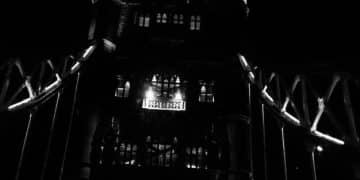Dream Theater’s Albums: A Deep Dive into Progressive Metal Mastery

Dream Theater’s discography is a cornerstone of progressive metal, showcasing unmatched musicianship and complex songwriting. This overview explores their essential albums, highlighting iconic tracks and critical reception, celebrating their impact on the genre and their enduring appeal.
Dream Theater’s musical journey is a testament to their unparalleled skill and innovative approach to progressive metal. Their albums have not only defined a genre but have also inspired countless musicians. Let’s explore some of their most groundbreaking and essential works.
Exploring Dream Theater’s Early Years
Dream Theater’s initial albums laid the foundation for their signature sound. These releases showcased their incredible technical abilities and songwriting prowess, setting them apart in the progressive metal scene.
When Dream and Day Unite (1989)
Released in 1989, “When Dream and Day Unite” is Dream Theater’s debut album. It features Charlie Dominici on vocals and presents a raw, energetic sound. While not as polished as their later work, it’s a significant starting point.
Images and Words (1992)
“Images and Words,” released in 1992, is often considered Dream Theater’s breakthrough album. With the addition of James LaBrie on vocals, the album features iconic tracks such as “Pull Me Under” and “Metropolis Pt. 1: The Miracle and the Sleeper.”
- Pull Me Under: Their most commercially successful single, known for its catchy riffs and memorable chorus.
- Metropolis Pt. 1: The Miracle and the Sleeper: A complex and ambitious track that showcases their progressive sensibilities.
- Learning to Live: An epic closer that combines emotional depth with technical brilliance.

These early albums established Dream Theater as a force to be reckoned with in the progressive metal world. “Images and Words” in particular set a new standard for the genre, blending technical proficiency with melodic songwriting.
The Rise of Progressive Metal Giants
As Dream Theater gained momentum, their albums became more ambitious and intricate. This period saw them solidifying their place as leaders in the progressive metal genre, pushing boundaries and experimenting with new sounds.
Awake (1994)
Released in 1994, “Awake” is a darker and heavier album compared to “Images and Words.” It features tracks like “6:00” and “Caught in a Web,” exploring themes of anxiety and introspection.
Falling into Infinity (1997)
“Falling into Infinity” marked a shift in Dream Theater’s sound, incorporating more accessible elements under pressure from their record label. Despite some criticism, it includes notable tracks such as “Hollow Years” and “You Not Me.”
During this time, Dream Theater demonstrated their ability to adapt and experiment, even when faced with external pressures. Although “Falling into Infinity” was a departure from their typical sound, it showcased their versatility and willingness to explore new musical territories.
Dream Theater’s Conceptual Masterpieces
Dream Theater is renowned for their concept albums, which tell complex and interconnected stories through music. These albums are often ambitious in scope, showcasing their storytelling abilities and musical innovation.
Metropolis Pt. 2: Scenes from a Memory (1999)
“Metropolis Pt. 2: Scenes from a Memory” is considered one of Dream Theater’s greatest achievements. A concept album that expands upon the themes introduced in “Metropolis Pt. 1,” it tells a gripping story of love, betrayal, and reincarnation.

- The Dance of Eternity: An instrumental tour de force that showcases Dream Theater’s technical prowess.
- Home: A powerful and emotionally charged track that drives the album’s narrative forward.
- The Spirit Carries On: A haunting and beautiful ballad that provides a sense of closure to the story.
Six Degrees of Inner Turbulence (2002)
“Six Degrees of Inner Turbulence” is another ambitious concept album from Dream Theater. The title track, a 42-minute epic, explores the stories of individuals struggling with various mental health issues.
These concept albums solidified Dream Theater’s reputation as master storytellers in the progressive metal genre. “Metropolis Pt. 2” is particularly celebrated for its intricate plot and musical complexity.
Mid-Career Reinventions and Evolutions
In the mid-2000s, Dream Theater continued to evolve their sound, exploring new musical directions while maintaining their signature progressive metal identity. These albums demonstrate their commitment to innovation and experimentation.
Train of Thought (2003)
“Train of Thought” is a heavier and more aggressive album from Dream Theater. It features tracks like “As I Am” and “Stream of Consciousness,” showcasing their ability to blend technical complexity with hard-hitting riffs.
Octavarium (2005)
“Octavarium” is an album that explores the concept of the octave, with each track representing a different musical style. The title track is a 24-minute epic that encapsulates the album’s themes.
During this period, Dream Theater demonstrated their versatility and willingness to push the boundaries of their sound. “Train of Thought” showcased their heavier side, while “Octavarium” explored a wide range of musical styles and influences.
Later Albums and Continued Innovation
Dream Theater’s later albums continue to demonstrate their commitment to innovation and musical excellence. These works showcase their ability to remain relevant and engaging, even after decades in the music industry.
Systematic Chaos (2007)
“Systematic Chaos” features tracks like “Constant Motion” and “The Dark Eternal Night.” It maintains a balance between heavy riffs and progressive elements, appealing to both long-time fans and new listeners.
Black Clouds & Silver Linings (2009)
“Black Clouds & Silver Linings” is notable for its diverse range of songs, including the epic “The Count of Tuscany.” This album showcases Dream Theater’s ability to create both heavy and emotionally resonant music.
In their later years, Dream Theater has consistently delivered high-quality albums that showcase their musicianship and songwriting abilities. They continue to evolve and experiment, ensuring their music remains fresh and engaging.
The Mike Mangini Era
The departure of Mike Portnoy and the addition of Mike Mangini marked a new chapter for Dream Theater. Mangini’s drumming style brought a fresh energy to the band, influencing their sound in significant ways.
A Dramatic Turn of Events (2011)
“A Dramatic Turn of Events” was the first album to feature Mike Mangini on drums. Tracks like “On the Backs of Angels” and “Outcry” showcase his technical skill and musical sensitivity.
Dream Theater (2013)
The self-titled “Dream Theater” album is a cohesive and well-crafted work that reflects the band’s renewed sense of identity. It features tracks like “The Enemy Inside” and “Along for the Ride,” highlighting their continued growth.
- On the Backs of Angels: A powerful opener that introduces Mangini’s drumming style.
- The Enemy Inside: A dynamic track that showcases Dream Theater’s ability to blend heavy riffs with melodic elements.
- Along for the Ride: A catchy and upbeat song that offers a lighter contrast to the album’s heavier moments.
The addition of Mike Mangini revitalized Dream Theater, inspiring them to explore new musical territories. His drumming style brought a fresh perspective to the band’s sound, ensuring they remained at the forefront of the progressive metal scene.
| Key Point | Brief Description |
|---|---|
| 🎸 Early Albums | Established Dream Theater’s signature sound. |
| 🎶 Concept Albums | Showcased storytelling and musical innovation. |
| 🥁 Mike Mangini Era | Brought a fresh energy and new drumming style to the band. |
| 🏆 Enduring Legacy | Dream Theater remains a leading force in progressive metal. |
Frequently Asked Questions
“Metropolis Pt. 2: Scenes from a Memory” is widely considered their most iconic album due to its intricate storytelling, musical complexity, and emotional depth, making it a benchmark in progressive metal.
Mike Mangini brought a fresh and energetic drumming style to Dream Theater, characterized by his precision and creativity, enhancing their overall sound while maintaining the band’s progressive essence.
“Images and Words” is an excellent starting point for new listeners, featuring accessible yet complex tracks like “Pull Me Under,” which showcases Dream Theater’s musical prowess and signature sound.
Dream Theater’s unique blend of instrumental virtuosity, complex compositions, and compelling storytelling sets them apart, creating a distinctive sound that has influenced many bands within the progressive metal genre.
Yes, Dream Theater’s concept albums, especially “Metropolis Pt. 2,” are highly recommended for their immersive narratives, intricate musical arrangements, and the emotional depth they bring to their stories.
Conclusion
Dream Theater’s extensive discography showcases their evolution and enduring influence on progressive metal. From their early works to their conceptual masterpieces and later albums, they have consistently pushed boundaries and demonstrated their unparalleled musicianship, cementing their place as legends in the genre.





